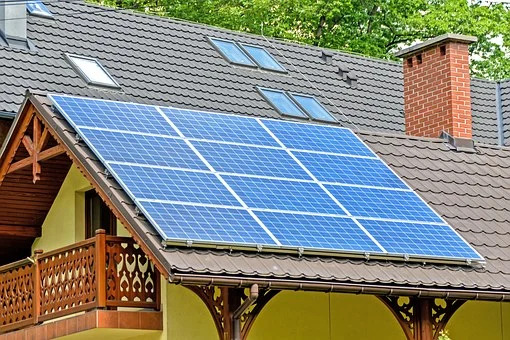With abundant information circulating the internet, many homeowners and business owners are choosing to live a more environmentally conscious lifestyle. One of the ways this is accomplished is by taking the time to understand how we can all make little changes to protect the environment. To restore and preserve our planet, we must all start using energy-efficient solutions. The most effective way to do this is to utilize natural resources such as solar power, which reduces our carbon footprint significantly. To understand how it does so, we must first understand how solar systems produce energy. In this light, we have concocted a brief overview to explain how solar energy is converted into electricity.
Solar Panels Absorb Sunlight
Panels are placed on the roof of any building and are activated by daylight. The primary material used for solar cells is silicon crystals and each individual panel consists of two layers of silicon. These rectangular-shaped panels are usually black or dark gray and soak up all the sun’s energy throughout the day through these solar cells, which are commonly referred to as photovoltaic cells, then these cells produce an electrical current.
The Cells Produce Electrical Current
Since these photovoltaic cells in the panel all consist of a thin semiconductor wafer which is made from two silicon layers, one is positively charged and the other is negatively charged. This allows the cells to fabricate an electrical domain that surrounds them. Then, the sun hits these solar cells, energizing the panel by causing electrons to escape from atoms within the layers. These electrons are then activated by the electric field that encircles the wafer and thus, the solar energy has been transformed to produce an electrical current.
Electric Energy is Converted
The solar panels continue to work efficiently to produce more electric energy from the sun. However, the sun generates energy called direct current energy, also known as DC, which cannot be used to power up a residence. Therefore, DC energy must be converted into alternating current energy (AC). AC is formed by an apparatus called the inverter. Today, modern solar systems have inverters that are able to be configured as one for the whole system or configured as individual micro-inverters. These inverters are connected behind the panel to efficiently and effectively transform DC energy into AC energy.
Converting solar energy into electricity has helped communities realize just how impactful these positive changes are on the environment. That is why the Seattle-based electricians at ArtisanElectricInc.com recommend that you look into solar power installation and electric services. These are not only the best way to preserve and restore the planet, but they are also the most cost-effective solution to save money on utility bills. It is important to hire solar contractors rather than electrical contractors to ensure that you’re investing in quality and energy-efficient options for your home or place of business.
Converted Electricity Powers Your Residence
The converted electricity or alternating current energy is what powers up your residence. The converted solar energy distributes electricity to each of your home appliances through your electrical panel. Similarly, electrical power is generated and applied through the same grid from your electrical company, so you won’t need to alter your utilities for solar energy to operate. You will still have access to your traditional power company if you wish to retrieve additional energy to supplement a shortage of solar energy on a cloudy or gloomy day where your panels don’t get much sunlight.
A Net Meter Tracks Usage
Solar power is more cost-effective than traditional power, mainly because solar power is energy converted from the sunlight; therefore, you will notice a decrease in your electric bill once you make the switch. A net meter measures the usage of energy in your home, as the grid stores the solar energy. The power generated in your home is tracked by this utility to record energy consumption. You are then charged with the overall usage. Solar power is the most affordable source of electricity in history.
As you can see, the conversion of solar energy into electricity isn’t all that complicated. Solar power can effectively power the appliances, systems, and devices in your home in an affordable and efficient way. By swapping your standard electricity for solar energy, you are not only making your own life easier, but it will facilitate the lives of the many generations to come by reducing energy consumption to preserve the environment. Moreover, you’ll save considerable amounts of money in the long run, which ultimately improves your quality of life.

